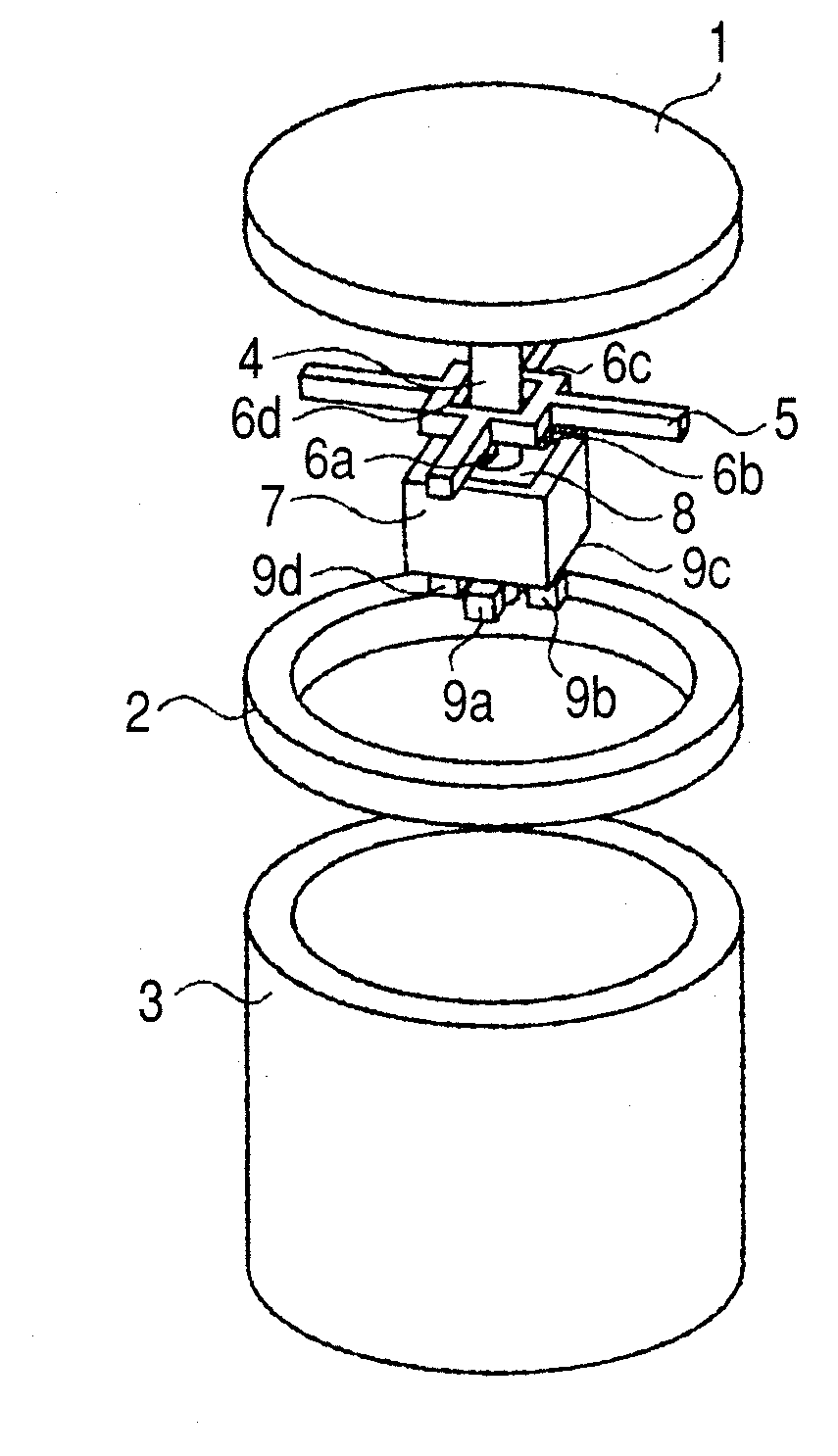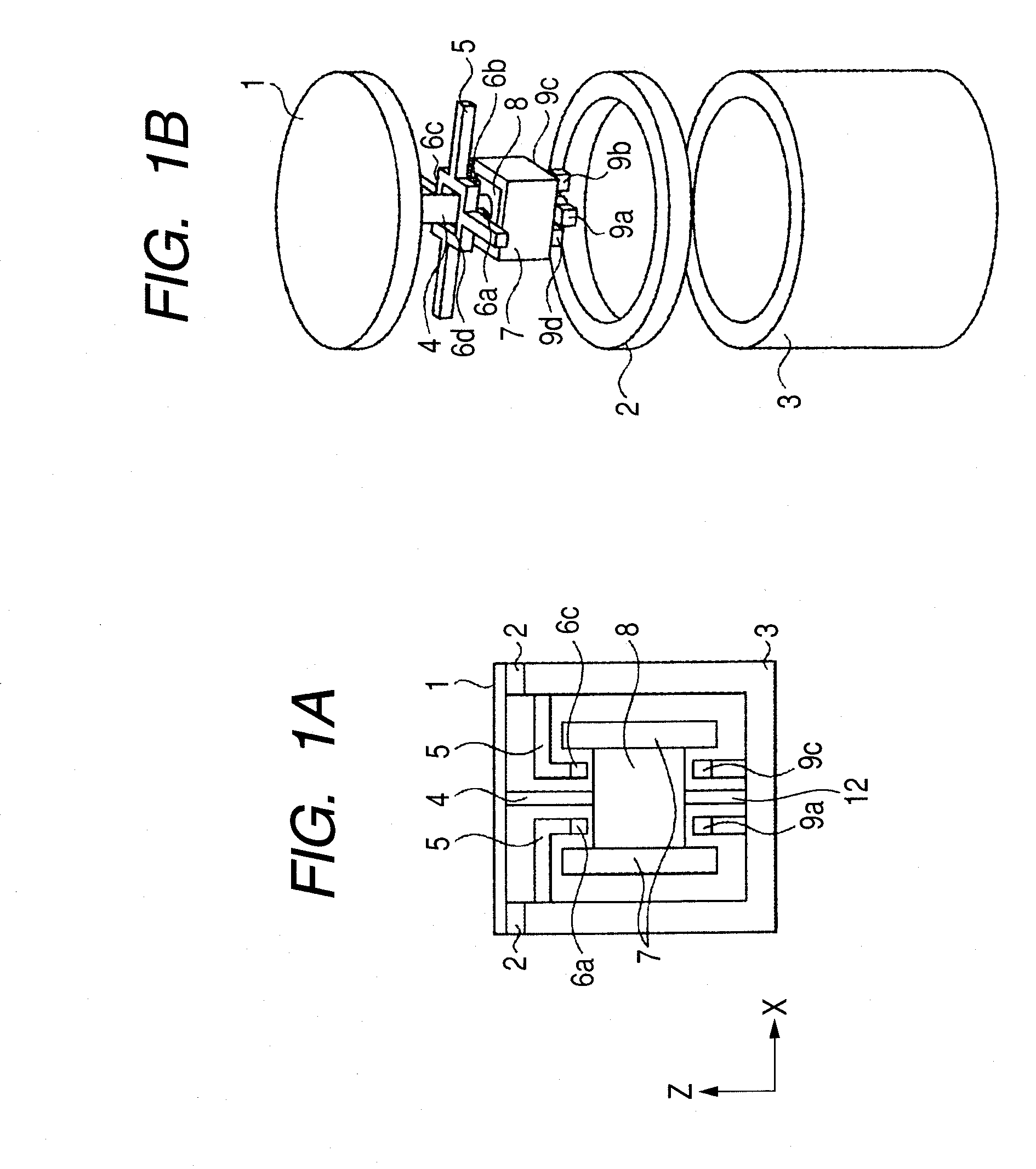Magnetic force sensor
a magnetic force sensor and sensor technology, applied in the field of force sensors, can solve the problems of durability and reliability, difficult to obtain high sensitivity, and size and cost reduction, and achieve the effects of reducing the generation of noise sources, high permeability, and high reliability against magnetic nois
- Summary
- Abstract
- Description
- Claims
- Application Information
AI Technical Summary
Benefits of technology
Problems solved by technology
Method used
Image
Examples
first embodiment
[0042]FIGS. 3A and 3B illustrate a result of magnetic field simulation, respectively. The simulation was performed with a Z-axisymmetric secondary static magnetic field model. FIG. 3A illustrates that a magnetic flux generation source is disposed, in the air, with 4 mm thickness in Z-axis direction, 2 mm thickness in X-axis direction (1 mm thickness in X-axis direction of the magnetic flux generation source illustrated because the magnetization direction axis meets Z-axis). FIG. 3B illustrates that the magnetic flux generation source is disposed with a magnetic body of 4 mm thickness in Z-axis direction and 1 mm thickness in X-axis direction. For the magnetic flux generation source, the characteristics of Nd—Fe—B magnet having residual magnetic flux density of 1.4T and coercitivity of 1000 kA / m were defined and the relative permeability of the magnetic body was set to 5000.
[0043]FIG. 3A illustrates a configuration of only a magnetic flux generation source in the air. This configurat...
second embodiment
[0048]FIGS. 6A and 6B illustrate a result of magnetic field simulation, respectively. FIG. 6B illustrates a layout of the magnetic body when a thickness thereof in Z-axis direction is changed from 4 mm to 6 mm so as to be larger than a thickness of the magnetic flux generation source 8 in Z-axis direction. Conditions of FIG. 6A are the same as Experimental Example 1 of FIG. 3A.
[0049]The magnetoelectric transducer is located at a distance of 500 μm in X-axis direction and 500 μm from the magnetic flux generation source in Z-axis direction to measure X-component of a magnetic field. If variations in X-component of magnetic flux density appearing at the magnetoelectric transducer when the magnetic flux generation source is displaced by ±50 μm in X-axis direction or ±50 μm in Z-axis direction are taken as ΔBxx and ΔBxz, respectively, graphs as illustrated in FIGS. 7 and 8 are obtained. An arrow on FIGS. 6A and 6B indicates a plot position. FIG. 7 illustrates that a displacement in magne...
PUM
| Property | Measurement | Unit |
|---|---|---|
| distance | aaaaa | aaaaa |
| force | aaaaa | aaaaa |
| magnetic flux | aaaaa | aaaaa |
Abstract
Description
Claims
Application Information
 Login to View More
Login to View More - R&D
- Intellectual Property
- Life Sciences
- Materials
- Tech Scout
- Unparalleled Data Quality
- Higher Quality Content
- 60% Fewer Hallucinations
Browse by: Latest US Patents, China's latest patents, Technical Efficacy Thesaurus, Application Domain, Technology Topic, Popular Technical Reports.
© 2025 PatSnap. All rights reserved.Legal|Privacy policy|Modern Slavery Act Transparency Statement|Sitemap|About US| Contact US: help@patsnap.com



